24 Rare Photos That Give Us Another View of World War I
World War I was an international conflict that saw millions of troops come face-to-face across Europe and other regions. We’ve all seen images that were captured during the war, and the following are some rarer ones that provide an alternative perspective of the fighting that took place during the 1910s.
Destroyed home in France
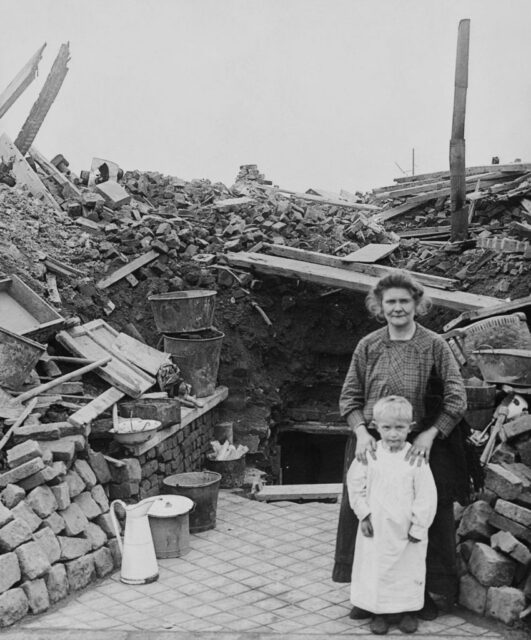
Unfortunately, the fighting taking place on the Western Front left civilians in its crosshairs. The above image shows a woman and her child standing with the remains of their home in Lens, Pas-de-Calais, France. It was destroyed during combat in 1917.
Fighting the Sinai and Palestine Campaign
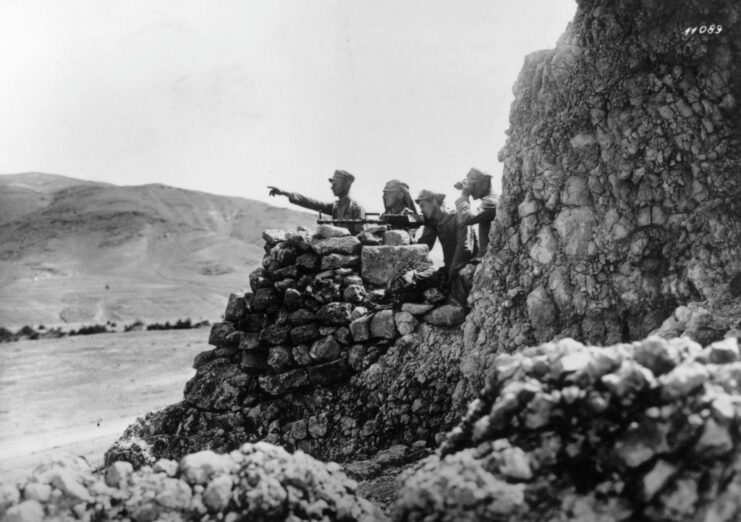
One of the little-discussed offensives of the First World War is the Sinai and Palestine Campaign. Taking place between January 1915 and October ’18 alongside the Arab Revolt, it saw the Commonwealth, French, Hejaz and Italian forces take on the German, Austro-Hungarian and Ottoman militaries.
This image, captured in 1916, shows a machine gun post being manned during the years-long campaign.
Learning the local language
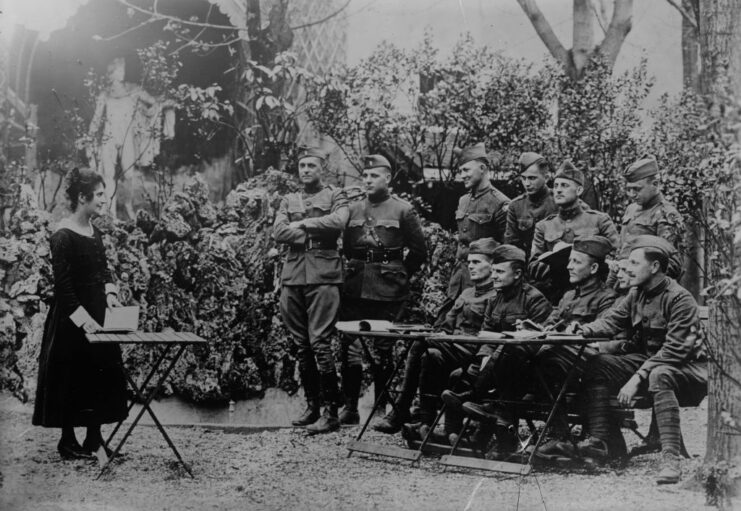
When it France, it’s best to learn the local language! Taken in 1918, this photograph shows a woman identified as Millicent Todd Bingham teaching French to American troops stationed overseas.
Jewish Legionnaires in Egypt
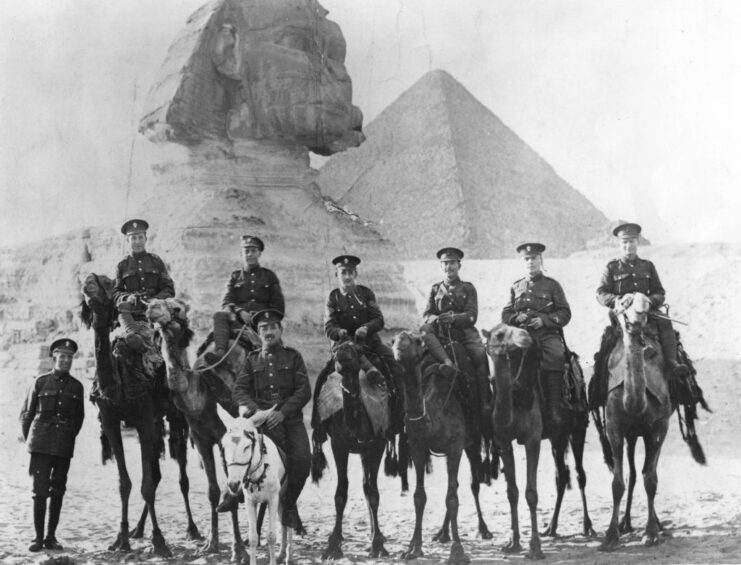
Serving as part of the Commonwealth forces, Jewish Legionnaires saw action during the Sinai and Palestine Campaign. This image shows them in Giza, Egypt, during World War I, during which time they paused to take a photo in front of some of the country’s famed landmarks.
Red cross nurses in Verdun, France
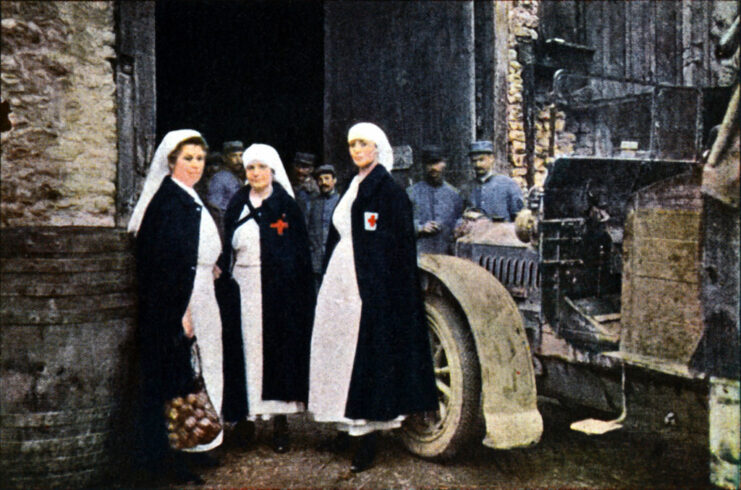
The Red Cross played a key role in providing aid to injured troops during World War I. This image, captured during the fighting of the Battle of Verdun, shows three nurses in uniform, with a French ambulance crew standing in the background.
German telephone station in the middle of the Western Front
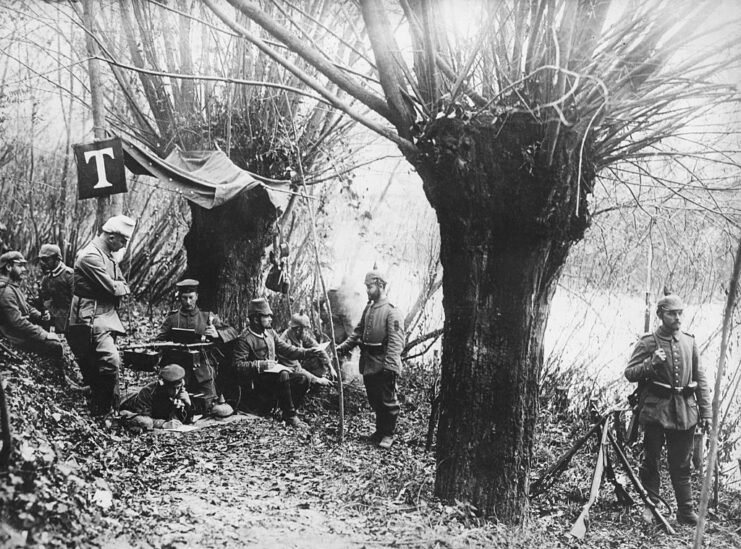
Communications were key to ensuring not only the success of offensives and troop advancements, but also to maintaining contact with the world outside of the battlefield. This is an example of a field telephone station operated by the Germans in France.
A call for recruits
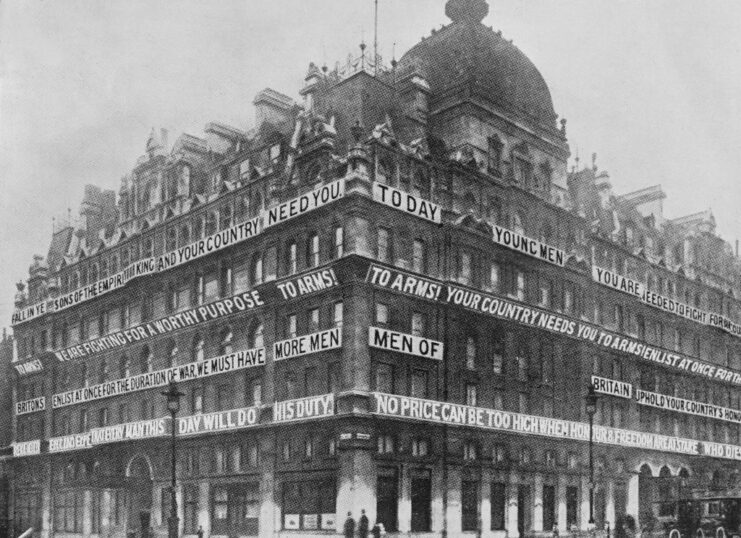
The above photograph shows recruitment posters plastered on the exterior of the Carlton Hotel, in London, United Kingdom. The signs are an example of just how much the British government pushed for citizens to join the cause in defending their country and Europe.
Finding joy amid the tumult of war
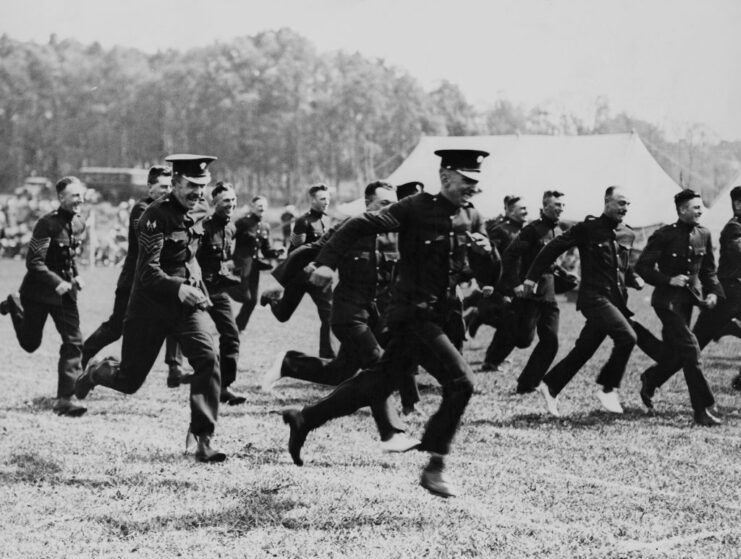
Even amid the fighting taking place, troops across Europe found time to experience the little joys in life. The above image is just one example of this. It shows infantrymen with the British Army’ Grenadier Guards taking a much-needed break in 1918.
Keeping clean in less-than-sanitary conditions
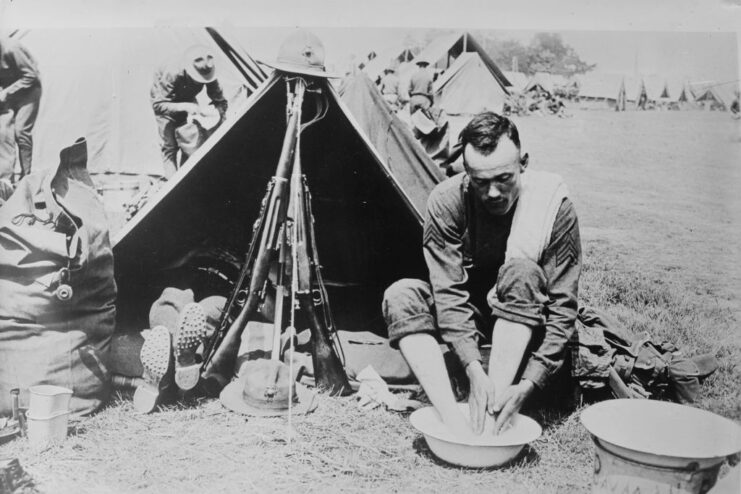
We’ve all heard about the unsanitary conditions troops on both sides had to contend with while serving on the Western Front; lice outbreaks, trench foot and dysentery were common among the men stationed in tight, unclean trenches.
The above photograph, taken toward the end of World War I, shows a weary US Marine trying to stay clean amid these conditions. He’s seen washing his feet, while his comrade takes a quick nap in their tent.
SS Red Cross
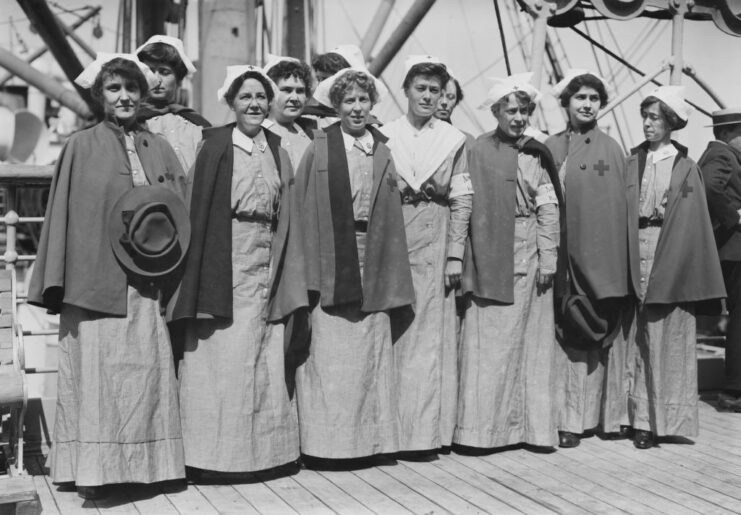
We’ve already discussed the crucial role the Red Cross played throughout the Great War. Many came from the United States, with the women in this photograph departing from New York City, New York, aboard a ship aptly dubbed the SS Red Cross.
Wartime devastation in Paris, France
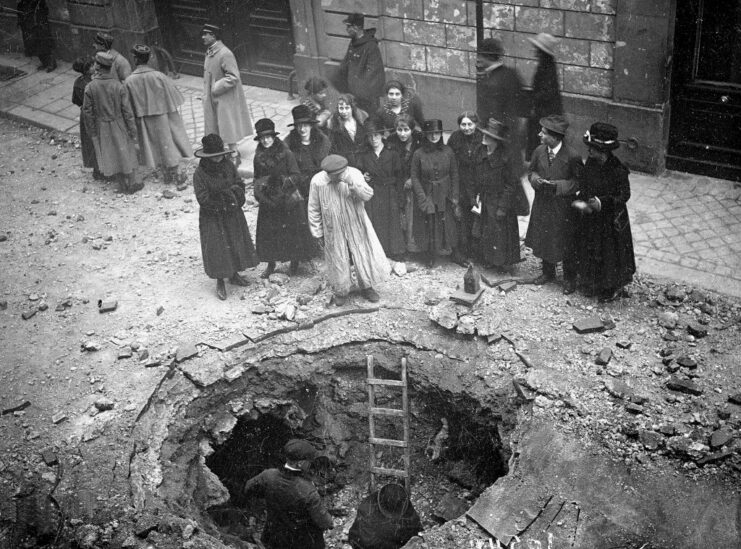
It wasn’t just small villages and towns that suffered damage or destruction during World War I – major cities were targeted, as well. Given its prominence, Paris was among the larger population areas to suffer damage from aerial bombardments.
Zeppelins were used to conduct these attacks, which left massive craters in the ground, as shown by the above photograph.
Serving in the Middle East
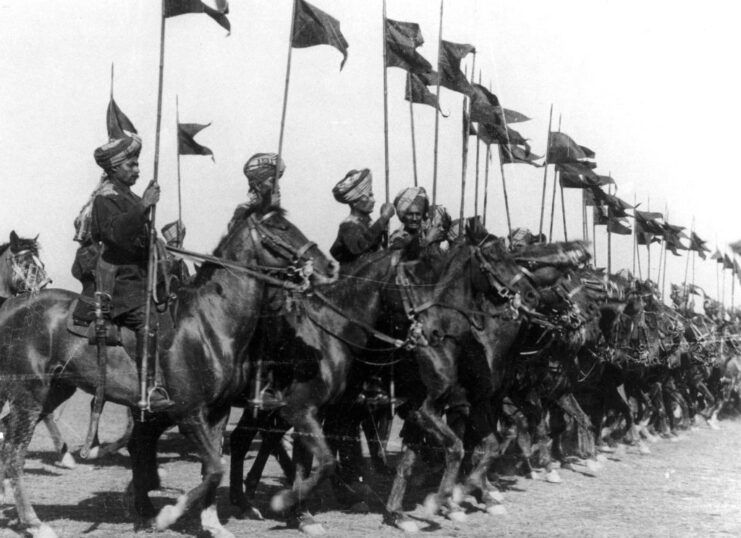
Indian troops played an important role under the Commonwealth during World War I, with the Middle Eastern Theater being where they truly showed their merit.
One of the most notable offensives in which they fought was the Mesopotamian Campaign. Half-a-million Indian soldiers, along with other Commonwealth troops, took on the Ottoman and German forces, resulting in an Allied victory.
Purchase liberty bonds!
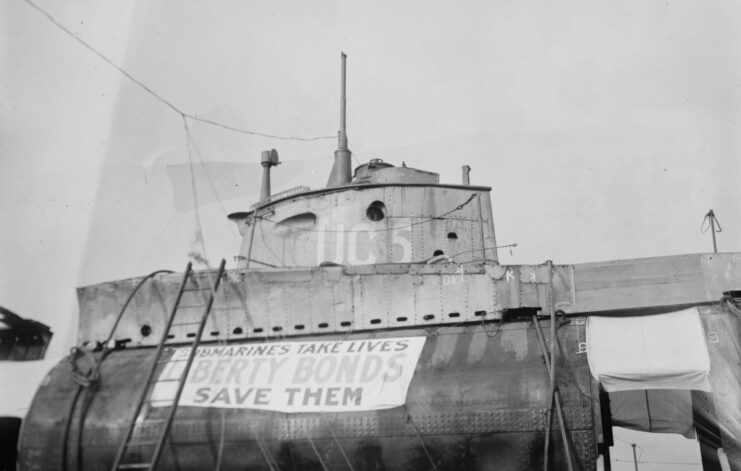
When an enemy vessel washes ashore, the logical thing is to turn it into a propaganda machine for your own cause! The German U-boat SM UC-5 ran aground in 1916 and eventually found her way to New York City, where she was used to promote war bonds.
Senegalese infantrymen serving with the French Army
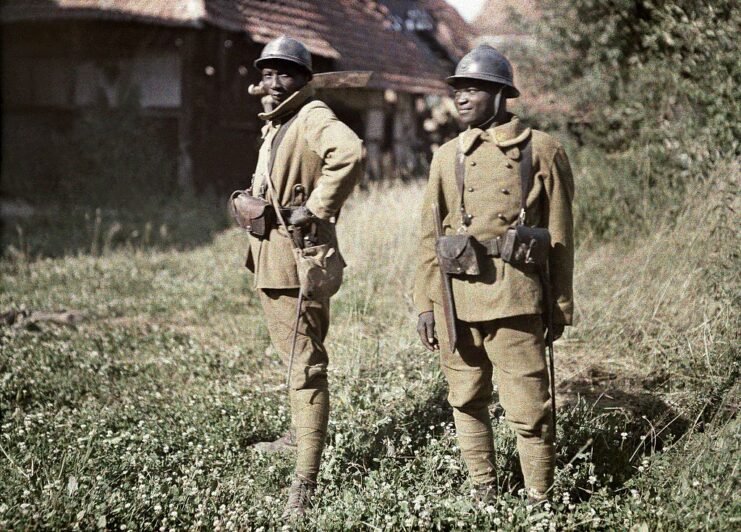
This photograph shows two Senegalese Tirailleurs who served under the French Army during the First World War. Tirailleurs had served with the French in numerous conflicts, with around 200,000 infantrymen serving in Europe from 1914-18.
Getting into position
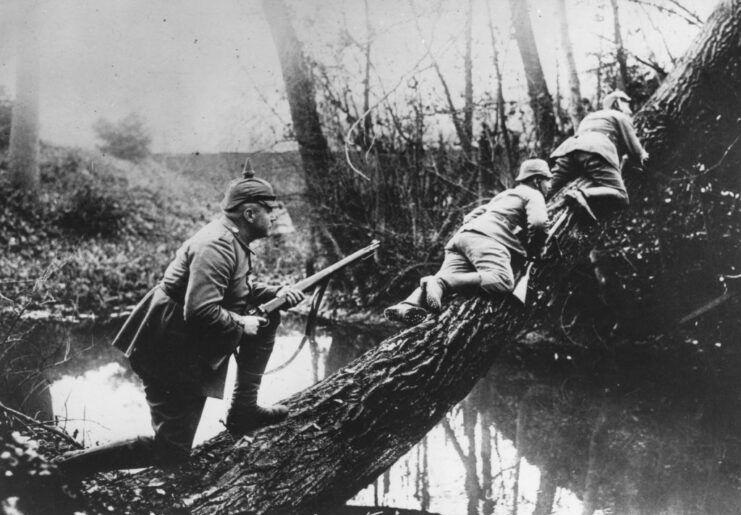
Sometimes, getting into position is just as difficult as the actual fighting. This image shows three German sharpshooters attempting to get into position during fighting at Aisne.
Effective camouflage
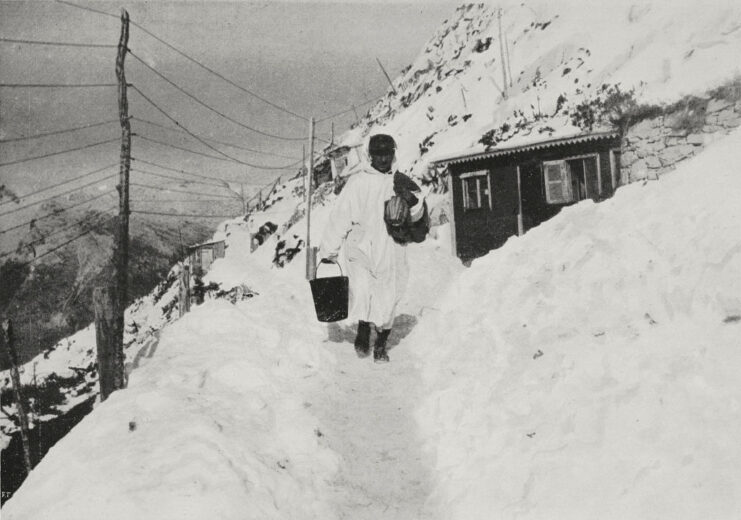
We can feel how cold the soldier pictured must have been. He was stationed in Upper Carnia, Italy, during the First World War, with this particular photograph captured in December 1916.
Heading off to war
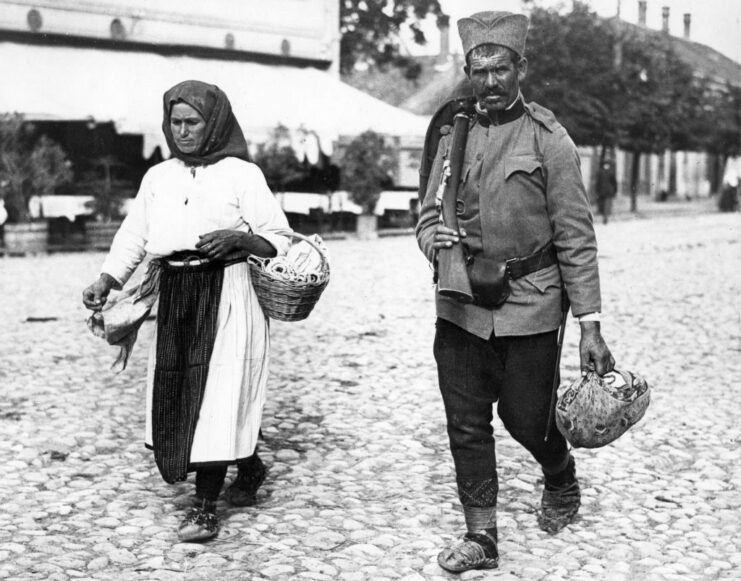
Even if it meant separating themselves from their loved ones, troops dutifully went to war. This image, taken in 1914, shows a Serbian soldier preparing to head to the front. He’s accompanied by his wife, who wishes to see him off.
Providing aid on the Western Front
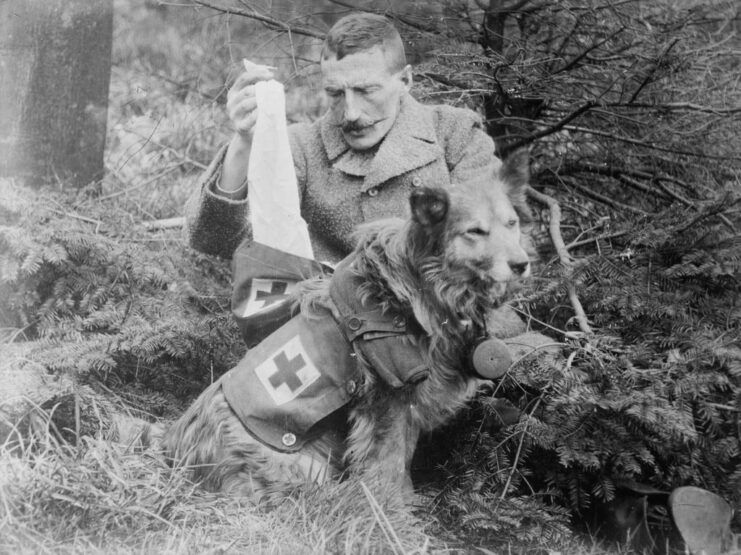
We all know dogs are a man’s best friend, but the phrase was never truer than amid the fighting of World War I. “Mercy dogs,” as they were known, were used to give aid to the wounded and often accompanied units heading into battle. Their strong noses were useful in not only finding injured soldiers, but also ensuring they were given treatment before it was too late.
If they happened across a man who was mortally wounded, they did what dogs do best: provide comfort and support.
Picking flowers amid the chaos of war
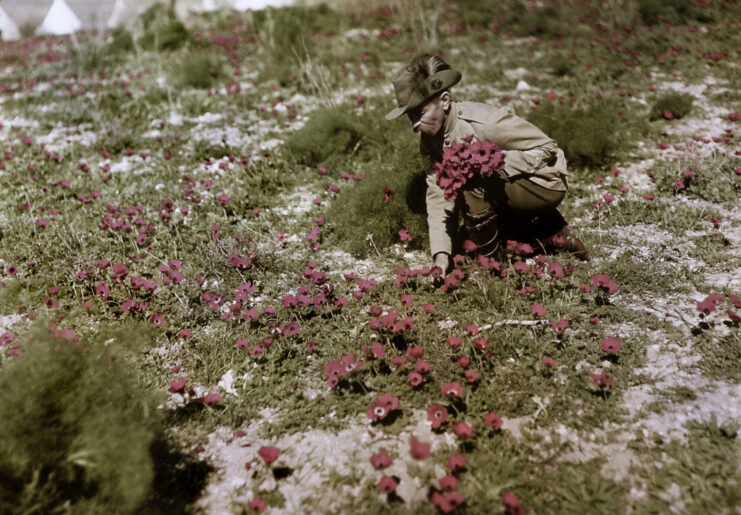
Australia’s 8th Light Horse Regiment fought against the Ottoman Empire in Africa and the Middle East. The above photograph shows George “Pop” Redding picking flowers amid combat, a symbol of beauty and peace during a time of chaos.
Capturing enemy weapons on the battlefield
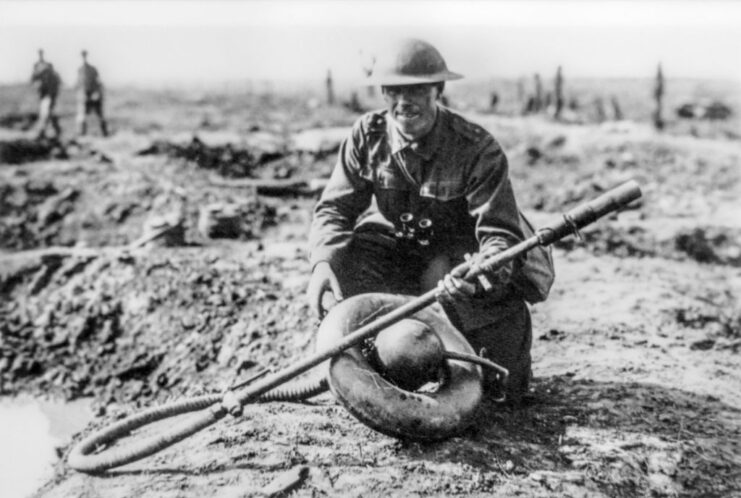
The Germans made use of flamethrowers on the battlefield throughout World War I. As with other weapons, many were dropped in the heat of battle and left to be picked up by the Allied forces.
Receiving medical treatment in France
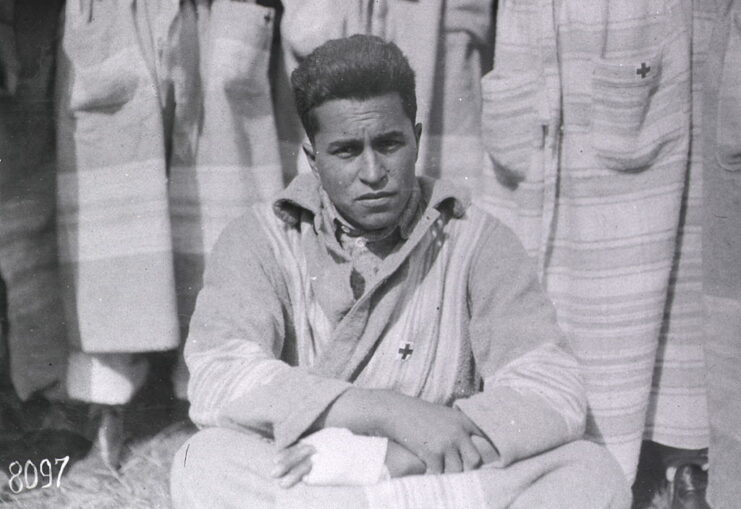
Cherokee soldiers served in the 142nd Infantry Regiment, 36th Texas-Oklahoma National Guard Division, and were deployed overseas. They’re best known as the “Code Talkers,” and they used their language to deliver and move messages without them being intercepted by the enemy.
This image shows a Cherokee man who was injured in combat and transported to a US-run military hospital in Paris, France.
Russian Cossacks played a key role in World War I
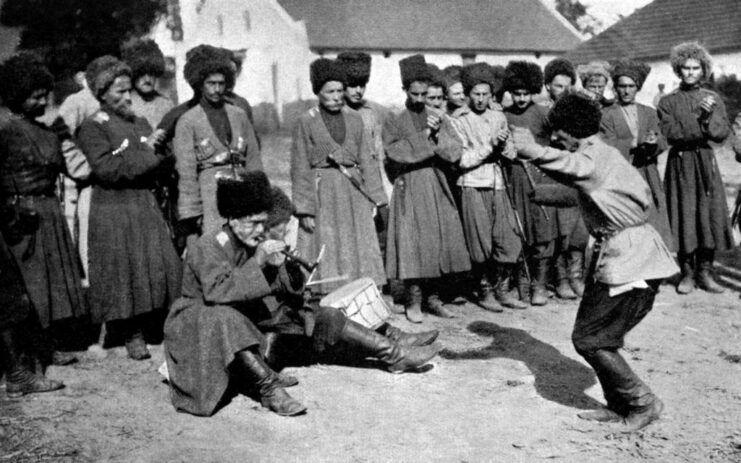
Russian Cossacks are among the most storied groups in all of history, and did you know that around 350,000 fought in the First World War? They were an important part of Imperial Russia’s cavalry force, and while they were forced to dismount in the early months of the conflict, they successfully transferred to roles in the trenches that came to encompass much of the fighting.
Saying goodbye to loved ones
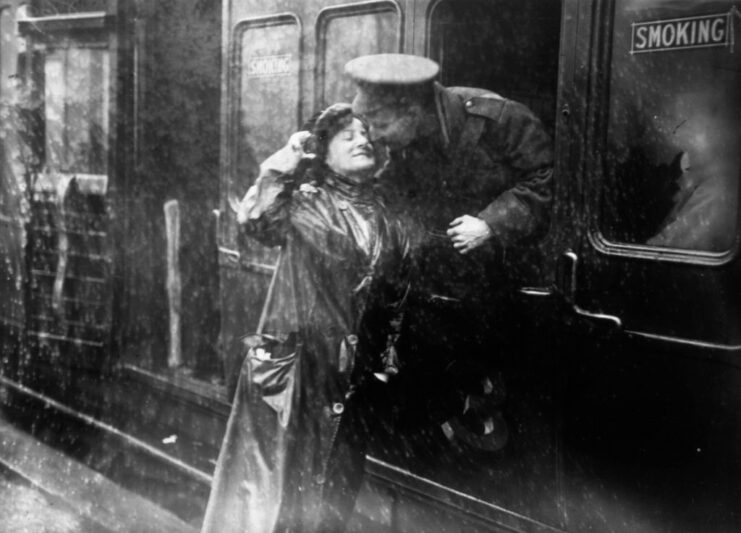
Here’s another image capturing a soldier heading off to war. This time, it was captured at Victoria Station in London, United Kingdom. What a touching scene.
Imperial Camel Corps
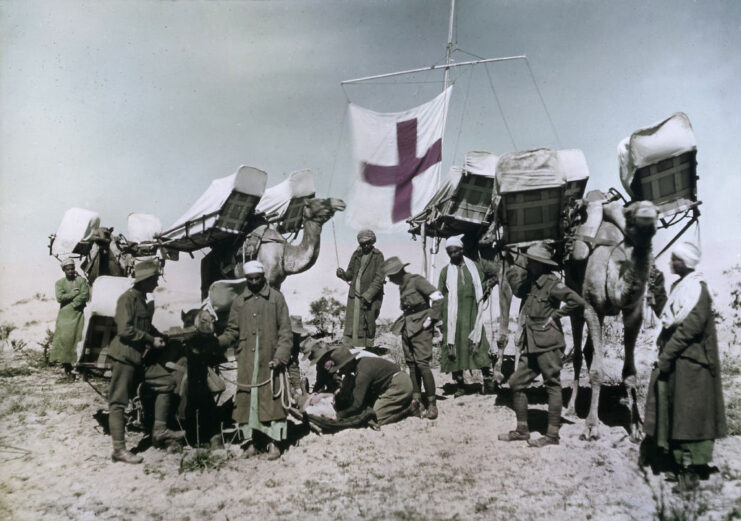
More from us: Kaiser Wilhelm and Tsar Nicholas II Tried (and Failed) to Avert World War I
Want War History Online‘s content sent directly to your inbox? Sign up for our newsletter here!
As the name suggests, the Imperial Camel Corps consisted of troops who used camels as a form of transportation. They saw action in the desert climate of the Middle East, where the animals easily navigated the rough, sandy terrain.
The post 24 Rare Photos That Give Us Another View of World War I appeared first on warhistoryonline.
24 Rare Photos That Give Us Another View of World War I
Philippines Truth
Post a Comment
0 Comments